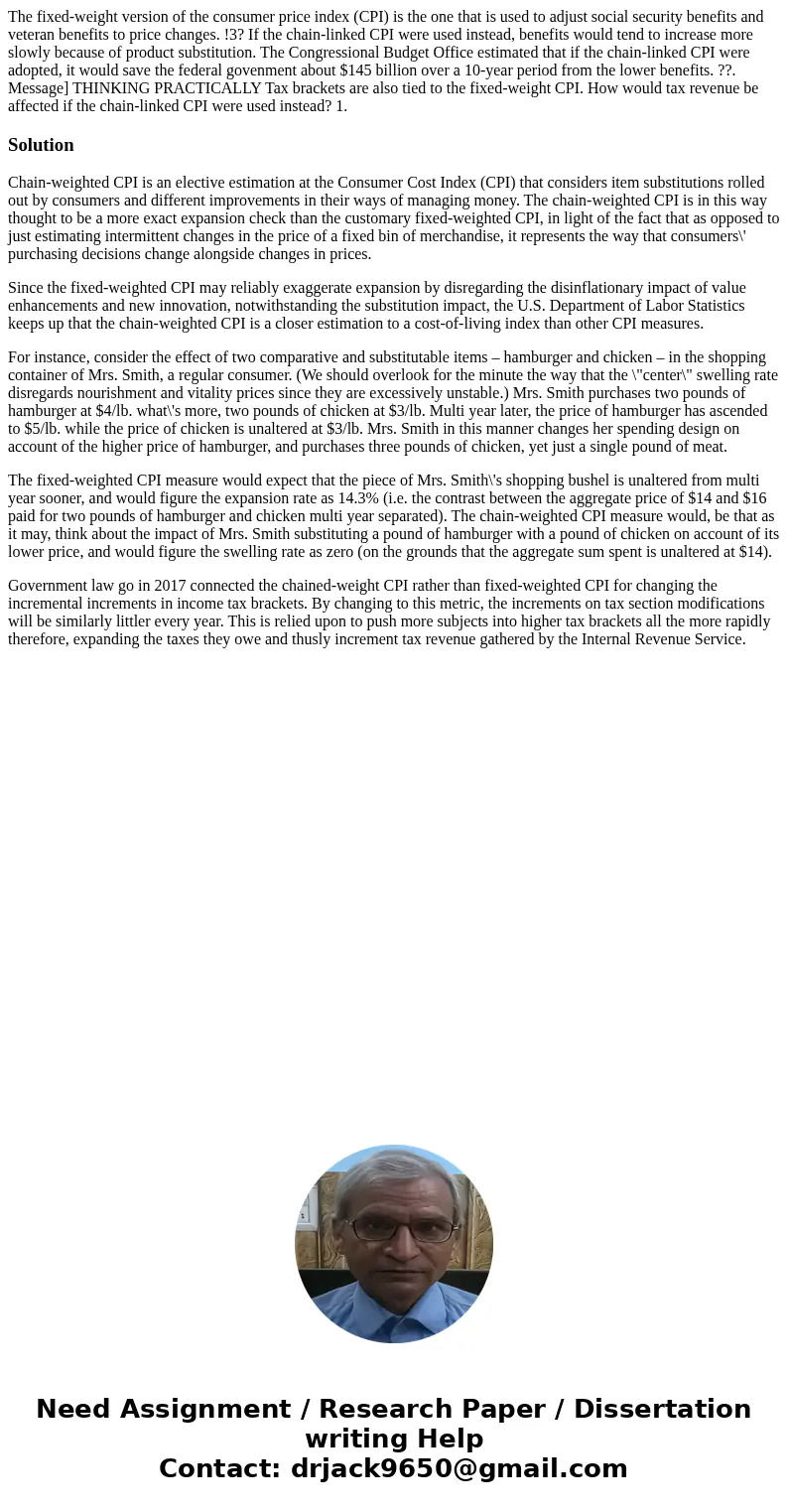The fixedweight version of the consumer price index CPI is t
Solution
Chain-weighted CPI is an elective estimation at the Consumer Cost Index (CPI) that considers item substitutions rolled out by consumers and different improvements in their ways of managing money. The chain-weighted CPI is in this way thought to be a more exact expansion check than the customary fixed-weighted CPI, in light of the fact that as opposed to just estimating intermittent changes in the price of a fixed bin of merchandise, it represents the way that consumers\' purchasing decisions change alongside changes in prices.
Since the fixed-weighted CPI may reliably exaggerate expansion by disregarding the disinflationary impact of value enhancements and new innovation, notwithstanding the substitution impact, the U.S. Department of Labor Statistics keeps up that the chain-weighted CPI is a closer estimation to a cost-of-living index than other CPI measures.
For instance, consider the effect of two comparative and substitutable items – hamburger and chicken – in the shopping container of Mrs. Smith, a regular consumer. (We should overlook for the minute the way that the \"center\" swelling rate disregards nourishment and vitality prices since they are excessively unstable.) Mrs. Smith purchases two pounds of hamburger at $4/lb. what\'s more, two pounds of chicken at $3/lb. Multi year later, the price of hamburger has ascended to $5/lb. while the price of chicken is unaltered at $3/lb. Mrs. Smith in this manner changes her spending design on account of the higher price of hamburger, and purchases three pounds of chicken, yet just a single pound of meat.
The fixed-weighted CPI measure would expect that the piece of Mrs. Smith\'s shopping bushel is unaltered from multi year sooner, and would figure the expansion rate as 14.3% (i.e. the contrast between the aggregate price of $14 and $16 paid for two pounds of hamburger and chicken multi year separated). The chain-weighted CPI measure would, be that as it may, think about the impact of Mrs. Smith substituting a pound of hamburger with a pound of chicken on account of its lower price, and would figure the swelling rate as zero (on the grounds that the aggregate sum spent is unaltered at $14).
Government law go in 2017 connected the chained-weight CPI rather than fixed-weighted CPI for changing the incremental increments in income tax brackets. By changing to this metric, the increments on tax section modifications will be similarly littler every year. This is relied upon to push more subjects into higher tax brackets all the more rapidly therefore, expanding the taxes they owe and thusly increment tax revenue gathered by the Internal Revenue Service.

 Homework Sourse
Homework Sourse